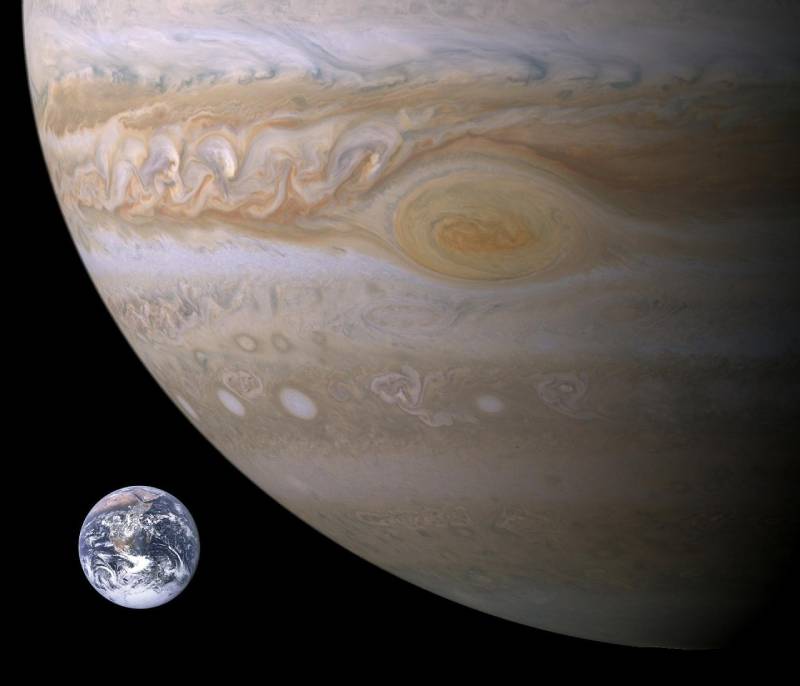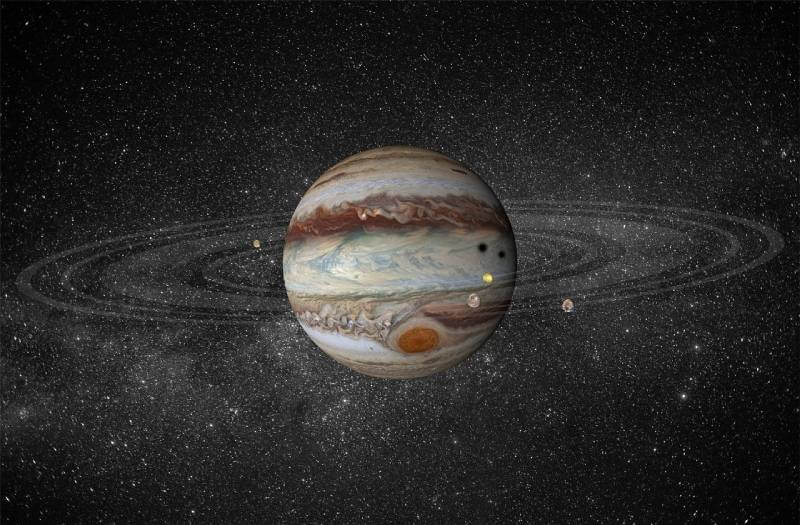Jupiter is often referred to as a “failed star” because it is made mostly of hydrogen and helium, which is similar to that of stars. However, Jupiter is not a failed star because its mass is not large enough to cause a nuclear reaction at its core; therefore, it is unable to become a “real star.”
Although Jupiter is a massive planet and is equivalent in size to many stars, it is the mass that counts. Jupiter doesn’t have the mass to create a thermonuclear reaction at its core which is required to be called a star.
What is a Star?
Stars are massive bodies of hydrogen and helium. Stars are stationary and will not wander. The stationary characteristics of stars allow us to individualize many stars and to identify constellations and galaxies. Unlike planets, such as Jupiter, they do not orbit around any parent celestial body.

Jupiter, as we know, orbits around our parent star, the sun. As it orbits around the sun it also has moons that orbit around Jupiter. This is not consistent with a star.
Stars have a mass that is so large that the core will ignite nuclear fusion and it will become a star.
Jupiter is extremely large, but Jupiter would have to have a mass at least 75x greater than what it has right now to fully become a star.
Why Isn’t Jupiter a Star?
Jupiter is not a failed star. A failed star would mean that it has all of the components of being a star and yet it still isn’t able to perform as a star. Jupiter doesn’t have the right features to be considered a star. It would need to have a mass much greater than it has and it would also require to have nuclear fusion at its core.
Is Jupiter The Only Failed Star?
Brown Dwarf stars share some characteristics of planets and some characteristics of stars. They are considered “failed stars” and we have many Brown Dwarf stars in our galaxy.
Characteristics of a Brown Dwarf Star:
● Mass: A Brown Dwarf star is considered a failed star and has a mass of about 13 to 80x more than Jupiter. Although they do have a massive mass they aren’t quite large enough to become a full-fledged star.
● Energy: Brown Dwarf stars do go through a nuclear reaction when they are first formed, but then it is not sustainable and is short-lived.
● Emission: Brown Dwarfs emit heat, much like Jupiter, which is one of the reasons that they are both bright. Brown Dwarfs can have very similar temperatures as Jupiter but are not as hot as stars.
● Color and Appearance: The name is a little deceiving. Brown Dwarf stars are actually red or even magenta. They can even show cloud layers (much like gas giants).
● Evolution: Over time, Brown Dwarfs will begin to dim and contract under their own gravity.
The Creation of Jupiter
Jupiter was formed in a two-step process. First, a swarm of ice and rock began to form. The comet-sized bodies collided and accumulated into a large planetary object.

Once the planetary object became 10x that of Earth, its self-gravity became strong enough to pull in gas. During the second half of the forming process, Jupiter gained most of its mass. Then shortly after, Saturn was able to grow to a similar but smaller size.
Why Did Jupiter Become a Failed Star?
Jupiter is very similar to Brown Dwarfs and small stars, and that is why it has been labeled as a “failed star.” Jupiter could have become a star if it would have formed a bit differently. If the planet would have formed with more mass, then Jupiter would have ignited nuclear fusion and turned into a star.
We should be happy that this did not occur. For if it had, Jupiter would be a second star within our solar system and we would be a double-star system. Our solar system would be too hot and life likely would not have evolved on Earth because the temperature would have been too high. We should be grateful that Jupiter is a planet and not a star.
Conclusion
Scientists are constantly learning more about Jupiter. They have missions that have made it closer and closer each time to the atmosphere of Jupiter. Scientists are continually learning about the planet, its origin, and the specific features that make it unique to the other gas giants in our solar system.

